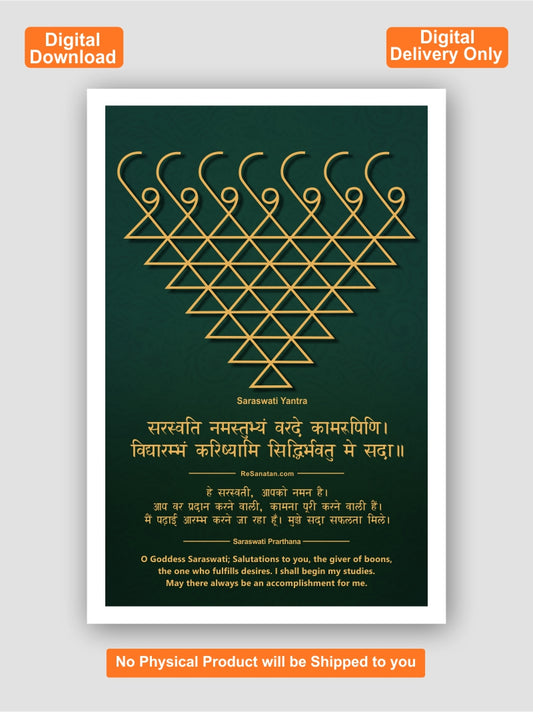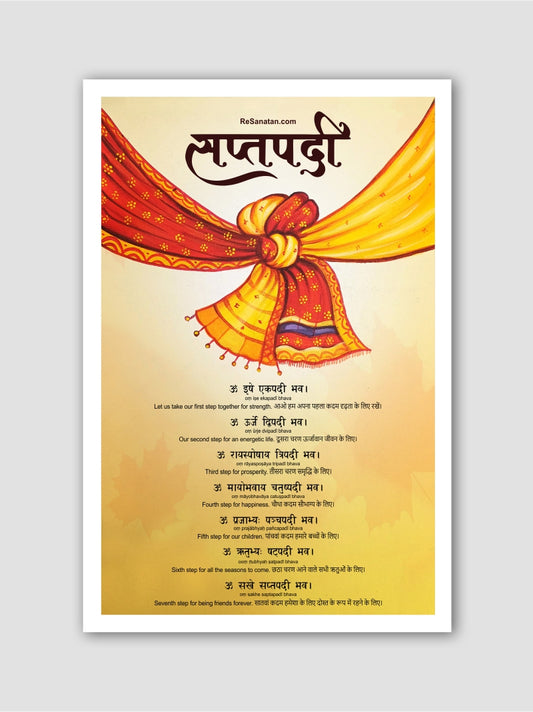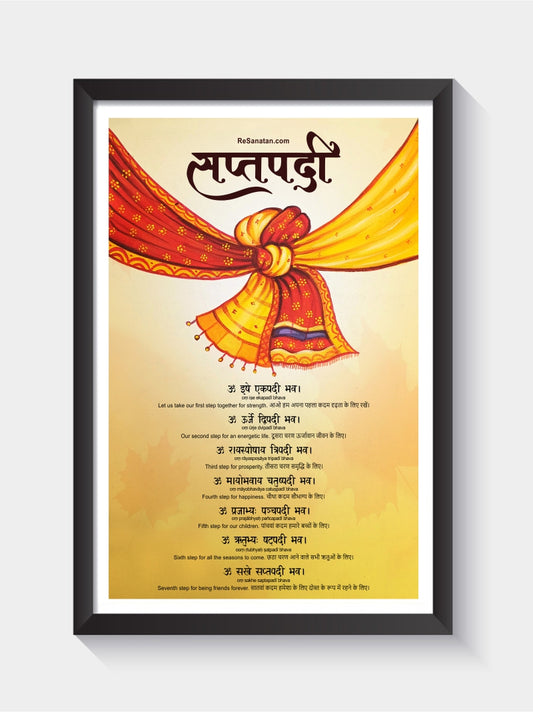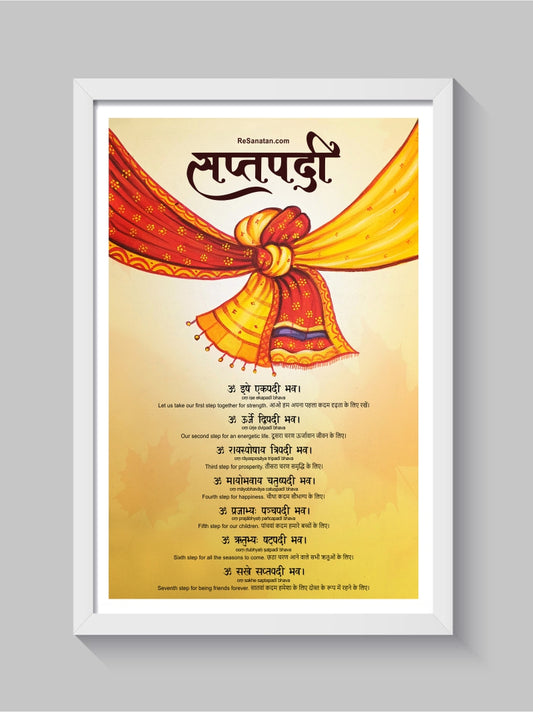The Shiva Vishnu Temple in Livermore, California, is not only a place of worship but also a center for cultural enrichment and community service. Established by the Hindu Community and Cultural Center (HCCC), this temple has become a vital part of the spiritual and cultural fabric of the Bay Area, attracting devotees and visitors from around the world. Let's delve into the history, architecture, activities, and community impact of this magnificent temple.

Historical Background of the Shiva Vishnu Temple in Livermore, California
Early Beginnings
The seeds of the Shiva Vishnu Temple were sown in the late 1970s when a group of Hindu families residing in the Bay Area recognized the need for a dedicated space for worship and cultural activities. These families, hailing from different parts of India, shared a common vision of creating a temple that would serve as a hub for religious and cultural gatherings, providing a sense of community and continuity for future generations.
In 1977, this group of visionaries formed the Hindu Community and Cultural Center (HCCC), a non-profit organization with the primary goal of establishing a temple. The HCCC embarked on a mission to raise funds and garner support from the broader community. Their efforts were met with enthusiasm and generosity, reflecting the collective desire to build a spiritual home away from home.
Land Acquisition and Construction
After several years of dedicated fundraising and planning, the HCCC acquired a 10-acre parcel of land in Livermore, California, in 1981. This location was chosen for its serene environment, away from the hustle and bustle of urban life, yet accessible to the growing Hindu population in the Bay Area.
The construction of the temple was a monumental task, requiring meticulous planning and execution. Renowned architects and artisans from India were consulted to ensure that the temple’s design would adhere to traditional Hindu architectural principles while also accommodating the needs of the local community. The design incorporated elements from both South Indian (Dravidian) and North Indian (Nagara) styles, creating a unique and harmonious blend.

Inauguration and Early Years
The Shiva Vishnu Temple was officially inaugurated in 1986 with great fanfare and devotion. The consecration ceremony (Kumbhabhishekam) was a significant event, attracting devotees from all over the country. The temple’s opening marked the fulfillment of a dream and the beginning of a new chapter in the religious and cultural life of the Hindu community in the Bay Area.
In its early years, the temple focused on establishing regular worship services and religious activities. Daily poojas (worship ceremonies) were initiated, and major Hindu festivals were celebrated with fervor and joy. The temple quickly became a focal point for the community, providing a space for spiritual solace, cultural expression, and social interaction.
Expansion and Development
As the Hindu population in the Bay Area continued to grow, so did the needs of the temple. The 1990s and 2000s saw significant expansions and improvements to the temple complex. Additional shrines were built to accommodate various deities, reflecting the diverse traditions within Hinduism. The temple’s community hall was expanded to host cultural events, educational programs, and social gatherings.
The temple’s leadership also placed a strong emphasis on community service and educational initiatives. Programs were developed to teach children about Hindu traditions, language, and arts, ensuring that cultural heritage would be passed down to future generations. The temple’s library was expanded to include a wide range of books and resources on Hindu philosophy, spirituality, and culture.
Legacy and Future
The Shiva Vishnu Temple stands as a testament to the enduring spirit of the Hindu community in the Bay Area. It is a place where tradition and modernity coexist, where spirituality and community service go hand in hand. The temple’s history is a story of vision, dedication, and collective effort, reflecting the values of unity, devotion, and cultural pride.
Architectural Marvel of the Shiva Vishnu Temple in Livermore, California
The Shiva Vishnu Temple in Livermore, California, is an architectural masterpiece that combines traditional Hindu temple design with modern construction techniques. Its grandeur and intricate details reflect the rich heritage of Hindu architecture, making it not only a place of worship but also a visual delight for visitors. Let's delve into the architectural marvels of this magnificent temple.

Blending South and North Indian Styles
The design of the Shiva Vishnu Temple is a harmonious blend of South Indian (Dravidian) and North Indian (Nagara) architectural styles. This fusion is evident in various aspects of the temple, from its towering gopuram (gateway tower) to the detailed carvings and sculptures that adorn its walls.
Gopuram: The temple's gopuram, inspired by South Indian architecture, is a towering structure that marks the entrance to the temple complex. It is adorned with intricate carvings and vibrant statues of deities, mythical creatures, and floral patterns. The gopuram serves as a majestic gateway, inviting devotees and visitors into the sacred space within.
Vimana: The vimana, or the main tower above the sanctum sanctorum (garbhagriha), is another striking feature of the temple. It follows the Dravidian style, characterized by its pyramid-like shape and intricate carvings. The vimana is often topped with a kalasha (decorative pot), symbolizing auspiciousness and divinity.
Sanctum Sanctorum and Deities
At the heart of the temple is the sanctum sanctorum, which houses the main deities, Lord Shiva and Lord Vishnu. This sacred space is meticulously designed to create an atmosphere of serenity and reverence.
Lord Shiva Shrine: The shrine dedicated to Lord Shiva features a lingam, the aniconic representation of Shiva, which signifies his formless, infinite nature. The lingam is placed on a yoni, symbolizing the creative energy of the divine. The shrine is decorated with intricate carvings depicting scenes from Shiva's mythology, including his cosmic dance (Nataraja) and his family, Parvati and Ganesha.
Lord Vishnu Shrine: Adjacent to the Shiva shrine is the shrine for Lord Vishnu, represented by a beautiful idol in his iconic form, holding a conch, discus, mace, and lotus. The shrine's walls are adorned with carvings depicting various avatars of Vishnu, such as Rama, Krishna, and Narasimha, showcasing his role as the preserver and protector of the universe.
Auxiliary Shrines
The temple complex also includes several auxiliary shrines dedicated to other Hindu deities, each crafted with equal care and devotion.
Shrine of Goddess Lakshmi: The shrine of Goddess Lakshmi, the consort of Lord Vishnu, is a place where devotees seek blessings for prosperity and well-being. The idol of Lakshmi is beautifully adorned, and the shrine features carvings that narrate stories of her divine grace and benevolence.
Shrine of Lord Ganesha: Lord Ganesha, the remover of obstacles, has a dedicated shrine within the temple complex. The idol of Ganesha, with his elephant head and pot-bellied human form, is a favorite among devotees, especially those seeking success in new endeavors.
Shrine of Goddess Saraswati: The shrine of Goddess Saraswati, the deity of knowledge and arts, is frequented by students and artists. Her idol, holding a veena (musical instrument) and scriptures, inspires devotees to seek wisdom and creative inspiration.
Shrine of Lord Hanuman: The shrine of Lord Hanuman, the ardent devotee of Lord Rama, is a testament to strength, devotion, and unwavering faith. The idol of Hanuman is depicted in a powerful stance, symbolizing his eternal readiness to serve and protect.
Sculptures and Carvings
One of the most captivating aspects of the Shiva Vishnu Temple is its extensive use of sculptures and carvings. These artistic elements are not merely decorative but also serve to educate and inspire devotees about Hindu mythology and philosophy.
Mythological Depictions: The temple walls are adorned with detailed carvings that depict scenes from Hindu epics such as the Ramayana and the Mahabharata. These carvings bring to life the stories of gods and goddesses, heroes and sages, and convey timeless moral and spiritual lessons.
Floral and Geometric Patterns: Interspersed with mythological scenes are intricate floral and geometric patterns, which are a hallmark of Hindu temple architecture. These patterns add to the aesthetic beauty of the temple and symbolize the harmony and order of the cosmos.
Divine Sculptures: Statues of various deities, each crafted with meticulous detail, are placed throughout the temple complex. These sculptures are often painted in vibrant colors, adding to the visual splendor of the temple.
Interior Design
The interior of the temple is designed to create a sacred and contemplative environment. The sanctum sanctorum is dimly lit, enhancing the sense of mystery and divinity. The use of natural materials like stone and wood adds to the temple’s earthy and timeless feel.
Altar and Offerings: The altar, where offerings are made, is centrally placed and accessible to devotees. It is adorned with flowers, lamps, and incense, creating an atmosphere of devotion and reverence.
Ceilings and Pillars: The ceilings and pillars within the temple are also richly decorated with carvings and paintings. The ceilings often depict celestial scenes, while the pillars feature various motifs and figures, adding to the overall grandeur of the temple’s interior.
Gardens and Surroundings
The temple complex is complemented by beautifully maintained gardens and open spaces, providing a tranquil environment for meditation and relaxation. The gardens are often used for outdoor rituals and community gatherings, further enhancing the temple’s role as a center for spiritual and social activities.
Serene Pond: A serene pond within the temple grounds adds to the peaceful ambiance. It is a place where devotees can sit and reflect, surrounded by the natural beauty of the temple’s landscape.
Spiritual and Religious Activities at the Shiva Vishnu Temple in Livermore, California
The Shiva Vishnu Temple in Livermore, California, is a vibrant center of spiritual and religious activities, offering a diverse array of services and events that cater to the spiritual needs of the Hindu community. These activities are designed to foster devotion, provide spiritual education, and promote a sense of community among devotees. Let's explore the various spiritual and religious activities that take place at this esteemed temple.
Daily Worship and Rituals
Poojas: Daily poojas (worship ceremonies) are the cornerstone of the temple’s spiritual activities. These rituals are conducted with great devotion and precision, following traditional Hindu practices. The poojas include offerings of flowers, fruits, and other sacred items, accompanied by the chanting of Vedic mantras and hymns. The primary daily poojas include:
Suprabhatam: A morning ritual to wake up the deities.
Alankaram: The decoration of the deities with flowers and ornaments.
Arati: The waving of lighted lamps before the deities, symbolizing the dispelling of darkness and ignorance.
Naivedyam: The offering of food to the deities, which is later distributed as prasadam to the devotees.
Abhishekam: Abhishekam is a special ritual where the deities are bathed with various sacred substances such as milk, honey, yogurt, ghee, and water. This ritual is performed regularly and is considered highly auspicious, symbolizing the purification and sanctification of the devotees.
Archana: Archana is a personalized pooja where the names of devotees and their family members are recited along with the names of the deities. This ritual is performed to seek blessings for health, prosperity, and well-being.
Festivals and Special Events
The Shiva Vishnu Temple is renowned for its grand celebration of Hindu festivals, each marked by elaborate rituals, cultural programs, and community gatherings. Some of the major festivals celebrated at the temple include:
Maha Shivaratri: Maha Shivaratri is one of the most significant festivals dedicated to Lord Shiva. The temple conducts special poojas, abhishekam, and all-night vigils, where devotees chant prayers and sing bhajans (devotional songs). The festival symbolizes the overcoming of darkness and ignorance in life and the world.
Rama Navami: Rama Navami marks the birth of Lord Rama. The temple celebrates this festival with special poojas, recitations of the Ramayana, and cultural programs that depict episodes from the life of Lord Rama. Devotees gather to seek the blessings of Lord Rama for righteousness and virtue.
Krishna Janmashtami: Krishna Janmashtami, the birthday of Lord Krishna, is celebrated with great enthusiasm. The temple organizes midnight poojas, devotional singing, and dramatizations of Lord Krishna’s life. Special offerings of sweets, especially butter and milk, are made to commemorate Krishna's childhood.
Navaratri and Dussehra: Navaratri, a nine-day festival dedicated to Goddess Durga, is celebrated with daily poojas and cultural events. The temple conducts special prayers for different forms of the Goddess each day. The festival culminates in Dussehra, which marks the victory of good over evil, symbolized by the triumph of Lord Rama over the demon king Ravana.
Diwali: Diwali, the festival of lights, is celebrated with special poojas, lighting of lamps, and bursting of fireworks. The temple organizes Lakshmi pooja to invoke the blessings of Goddess Lakshmi for prosperity and happiness. The celebration also includes cultural programs and a community feast.
Pongal and Sankranti: These harvest festivals are celebrated with special rituals thanking the deities for a bountiful harvest. Traditional offerings of rice and sugarcane are made, and the temple hosts cultural programs showcasing folk dances and music.
Weekly and Monthly Programs
In addition to daily and festival activities, the temple offers a variety of weekly and monthly programs to engage the community in spiritual practices.
Bhajan Sessions: Weekly bhajan sessions are held where devotees gather to sing devotional songs in praise of the deities. These sessions are a source of spiritual upliftment and communal harmony.
Satsangs: Satsangs (spiritual gatherings) are organized regularly, featuring discourses on Hindu philosophy, scriptures, and the teachings of saints. These sessions provide an opportunity for devotees to deepen their understanding of spirituality and seek guidance from learned speakers.
Special Poojas and Homams: The temple conducts special poojas and homams (fire rituals) on auspicious days and during significant astrological events. These rituals are performed to invoke divine blessings for specific purposes, such as health, wealth, and spiritual progress.
Yoga and Meditation Classes: To promote holistic well-being, the temple offers regular yoga and meditation classes. These classes help participants achieve physical fitness, mental peace, and spiritual growth. The serene environment of the temple provides an ideal setting for these practices.
Educational and Youth Programs
Balavihar: Balavihar is a weekly educational program for children, where they learn about Hindu culture, values, and scriptures through stories, activities, and discussions. The program aims to instill a sense of pride in their heritage and develop moral and ethical values.
Gita and Vedic Chanting Classes: The temple offers classes on the Bhagavad Gita and Vedic chanting, providing an in-depth understanding of these ancient scriptures. These classes are open to all age groups and are designed to enhance spiritual knowledge and practice.
Youth Camps and Leadership Programs: The temple organizes youth camps and leadership programs that focus on developing leadership skills, community service, and spiritual education. These programs provide a platform for young members to connect with their roots, engage in meaningful activities, and develop a sense of responsibility towards society.

Community Services
Annadanam Program: The Annadanam program, which involves the distribution of free meals, is a significant aspect of the temple’s community service initiatives. This program ensures that no devotee leaves the temple hungry and embodies the principle of selfless service.
Health Camps: The temple regularly organizes health camps offering free medical check-ups, consultations, and health education. These camps are aimed at promoting health and well-being within the community.
Educational Scholarships: The temple provides educational scholarships to deserving students, supporting their academic pursuits and encouraging excellence. This initiative reflects the temple’s commitment to education and empowerment.
Food Drives and Charity Events: The temple conducts food drives and charity events to support the underprivileged and marginalized sections of society. These initiatives are part of the temple’s broader mission of promoting compassion and social responsibility.
Visiting the Shiva Vishnu Temple in Livermore, California
The Shiva Vishnu Temple in Livermore, California, offers visitors a serene and enriching experience, combining spiritual fulfillment with cultural enrichment. Whether you are a devotee seeking blessings, a tourist exploring cultural heritage, or a curious soul looking for peace, visiting this temple can be a memorable and uplifting journey. Here's a detailed guide on what to expect when visiting the temple.

Planning Your Visit
Location and Accessibility: The temple is located at 1232 Arrowhead Avenue, Livermore, California. The location is easily accessible by car and has ample parking space for visitors. Public transportation options are also available, making it convenient for those who do not drive.
Temple Timings: The temple is open daily, with specific timings for different activities:
Morning Hours: 8:00 AM - 12:00 PM
Evening Hours: 5:00 PM - 9:00 PM
It's advisable to check the temple’s official website for any changes in timings or special event schedules before planning your visit.
Temple Etiquette and Guidelines
Dress Code: Visitors are encouraged to dress modestly and respectfully. Traditional Indian attire, such as sarees, salwar kameez, or dhotis, is preferred, but not mandatory. Avoid wearing shorts, sleeveless tops, or revealing clothing.
Footwear: As with most Hindu temples, visitors are required to remove their footwear before entering the main temple complex. Shoe racks are provided near the entrance for your convenience.
Behavior: Maintain a respectful and quiet demeanor within the temple premises. Refrain from using mobile phones, speaking loudly, or engaging in any disruptive activities. Photography is usually allowed in certain areas, but it’s best to check with the temple authorities for specific guidelines.
Exploring the Temple Complex
Main Sanctum: The heart of the temple is the main sanctum, where the deities Lord Shiva and Lord Vishnu reside. Spend some time offering prayers, meditating, or simply soaking in the serene atmosphere. Devotees can participate in the daily poojas and rituals, seeking blessings and spiritual solace.
Auxiliary Shrines: Surrounding the main sanctum are several smaller shrines dedicated to various deities, including Goddess Lakshmi, Lord Ganesha, Goddess Saraswati, and Lord Hanuman. Each shrine is beautifully decorated, and devotees can offer prayers and seek blessings from these deities as well.
Hall of Saints: The temple also features a Hall of Saints, where statues and images of various Hindu saints and sages are displayed. This hall serves as a reminder of the rich spiritual heritage and the teachings of these revered figures.
Library and Educational Resources: The temple houses a well-stocked library with a vast collection of books on Hinduism, spirituality, and Indian culture. Visitors interested in learning more about Hindu philosophy and scriptures can explore these resources.
Cultural Hall: The cultural hall within the temple complex is used for hosting various events, including cultural performances, educational programs, and community gatherings. Check the temple’s event calendar for upcoming programs that might coincide with your visit.
Special Services and Offerings
Archana and Abhishekam: Visitors can book special poojas such as Archana and Abhishekam. These personalized rituals are performed by the temple priests and involve chanting the devotee’s name along with the names of the deities. It’s a way to seek specific blessings for health, prosperity, and well-being.
Prasadam: Prasadam (sanctified food) is distributed to devotees after the poojas. It is considered highly auspicious and a blessing from the deities. The temple also has a canteen that serves vegetarian meals and snacks, allowing visitors to enjoy a meal in the serene temple surroundings.
Gift Shop: The temple’s gift shop offers a variety of religious items, including idols, pictures of deities, books, and souvenirs. Visitors can purchase these items as mementos of their visit or as gifts for friends and family.
Special Events and Festivals
Festival Celebrations: The temple is renowned for its grand celebration of Hindu festivals. Participating in these festivals can be a unique and enriching experience. Major festivals such as Maha Shivaratri, Diwali, Navaratri, and Krishna Janmashtami are celebrated with elaborate rituals, cultural programs, and community feasts.
Community Services: The temple regularly organizes community service activities, including food drives, health camps, and educational programs. Visitors can participate in these activities, contributing to the temple’s mission of serving the community.
Gardens and Outdoor Spaces
Serene Gardens: The temple complex features beautifully maintained gardens that provide a peaceful environment for meditation and relaxation. The gardens are adorned with flowers, plants, and statues of deities, creating a tranquil setting for visitors to unwind.
Pond: A serene pond within the temple grounds adds to the overall peaceful ambiance. Visitors can sit by the pond, reflect, and enjoy the natural beauty of the temple’s surroundings.
Tips for an Enriching Visit
Arrive Early: To fully experience the spiritual ambiance and avoid crowds, consider arriving early in the morning.
Participate Actively: Engage in the rituals, listen to the chants, and immerse yourself in the spiritual activities to gain a deeper understanding and connection.
Respect Local Customs: Follow the temple’s customs and guidelines, showing respect for the traditions and practices of the Hindu faith.
Stay Informed: Check the temple’s website or contact the temple office for any updates on events, timings, and special activities.
Conclusion
The Livermore Temple stands as a testament to the enduring spirit of Hinduism and its ability to bring people together in a shared quest for spirituality, knowledge, and community service. Whether you are a devout follower, a cultural enthusiast, or a curious visitor, the Livermore Temple offers a unique and enriching experience that resonates with the timeless values of love, peace, and unity.


























